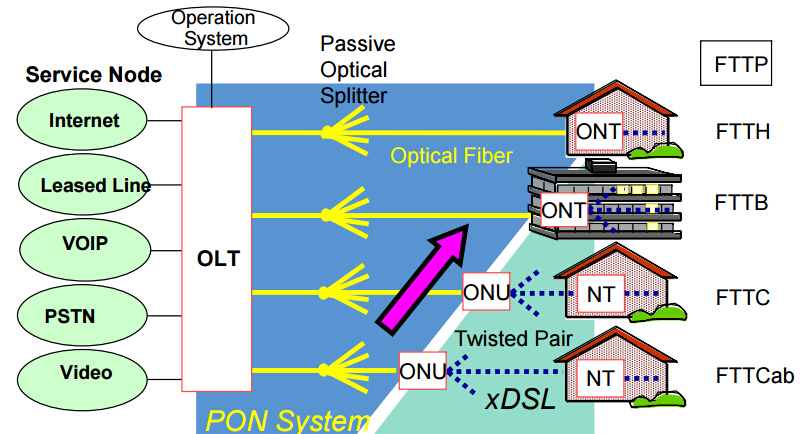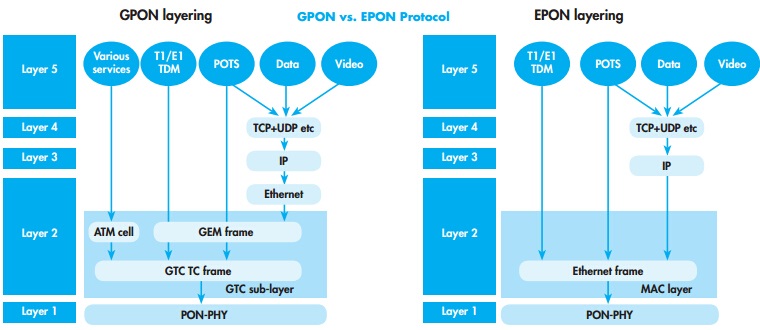Nowadays, there is a growing popularity of Video-on-Demand (VoD), VoIP and increased IPTV deployment. Providers aim to offering fiber-to-the-home (FTTH), (fiber-to-the-building) FTTB and fiber-to-the-curb (FTTC) solutions through advancing passive optical network (PON) technology. The term “PON” may confuse you for its complexity and extensiveness. Details are as followed.
PON is a single, shared optical fiber that uses inexpensive optical splitters to divide the single fiber into separate strands. It can build up a point-to-point topology supporting 1Gbps transmission to home and business typically within 20km. PON system is called “passive” because that there are no active electronics within the access network. It uses optical splitters to separate and collect signals rather than electrically powered switching equipment.
PON consists of an Optical Line Terminal (OLT) connected to multiple Optical Network Units (ONUs) via an Optical Distribution Network (ODN).
OLT: it is a device at the service provider’s central office, performing conversion between the electrical signals used by the service provider’s equipment and the fiber optic signals used by the passive optical network and coordinating the multiplexing between the conversion devices on the other end of that network.
ODN: it is used for distributing signals to users in a telecommunications network by optical fiber. ODN has been made up entirely of passive optical components particularly singlemode optical fibers and optical splitters.
ONUs: they are devices near end users, delivering traffic-load information provided by OLTs to each end user.

PON system has achieved significant deployment in today’s FTTx networks especially in FTTH networks as the development of Gigabit passive optical network (GPON) and Ethernet passive optical network (EPON). Nowadays, GPON and EPON are the mostly widely used types of PON for their low cost, high bandwidth, great flexibility and easy management, etc.
GPON: it is defined by ITU-T recommendation series G.984.1 through G.984.6. It can transport not only Ethernet, but also ATM and TDM (PSTN, ISDN, E1 and E3) traffic. It supports services like carrying video and delivering video on single fiber distribution, allowing low-consuming transmission, more efficient maintenance, cabling and overall performance.
EPON: it is defined by the Ethernet standard rather than by the ATM standard, making you utilize the economies-of-scale of Ethernet. It can provide simple and easy-to-manage connectivity to Ethernet-based, IP equipment both at the customer premises and at the central office. It is perfect for voice and video traffic solution as with other Gigabit Ethernet media.

For more information about OLTs, Optical Splitters and ONUs, please visit www.fs.com.
Originally published at: www.fiber-optic-equipment.com/a-guide-for-pon.html
